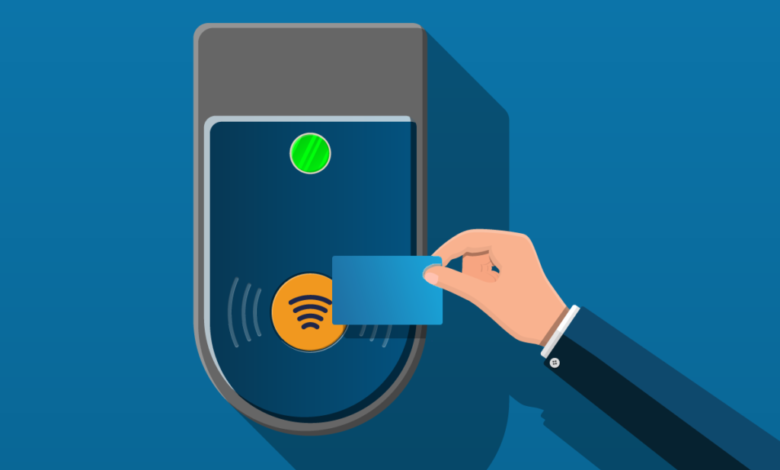Advantages of MIFARE Ultralight C Chips Versus MIFARE Classic Chips

In the world of RFID technology, choosing the right chip for your needs is crucial. Two popular options are the MIFARE Ultralight C chips and the MIFARE Classic chips. Understanding their differences can help you make an informed decision. the MIFARE Ultralight C chips and the MIFARE Classic chips. Understanding their differences can help you make an informed decision.
Key Takeaways
- Enhanced Security: MIFARE Ultralight C chips offer better security features compared to MIFARE Classic chips.
- Cost Efficiency: MIFARE Ultralight C chips are more cost-effective, making them suitable for single-use applications.
- Flexibility and Performance: Both chips have unique strengths, but MIFARE Ultralight C is more versatile for various applications.
Enhanced Security
MIFARE Ultralight C
- Advanced Encryption: MIFARE Ultralight C chips use 3DES (Triple Data Encryption Standard) for enhanced security.
- Protection Against Cloning: With advanced cryptographic protection, these chips are harder to clone, ensuring data integrity.
- Data Confidentiality: Secure communication protocols protect sensitive information from unauthorized access.
MIFARE Classic
- Basic Security: MIFARE Classic chips use proprietary encryption, which has been compromised over the years.
- Limited Security Features: Suitable for low-security applications where data protection is not critical.
Cost Efficiency
MIFARE Ultralight C
- Low-Cost Solution: Ideal for single-use applications like event tickets, public transport, and loyalty cards.
- Economical Production: Lower production costs make them a cost-effective choice for large-scale deployments.
- Compact Size: Smaller memory capacity (192 bytes) is sufficient for many single-use cases.
MIFARE Classic
- Higher Costs: Typically more expensive due to larger memory capacity and additional features.
- Reusable: Suitable for applications where the card will be used multiple times, justifying the higher cost.
Flexibility and Performance
MIFARE Ultralight C
- Versatile Applications: Used in a wide range of applications, from access control to event management.
- Quick Processing: Faster read and write times enhance user experience in high-traffic areas.
- Compact Size: Smaller memory capacity (192 bytes) is sufficient for many single-use cases.
MIFARE Classic
- Higher Memory Capacity: Offers more storage (1KB or 4KB) for complex applications requiring more data.
- Proven Technology: Widely used and trusted in various industries for over a decade.
- Robust Performance: Reliable performance in applications like public transportation and access control systems.
Applications and Use Cases
MIFARE Ultralight C
- Event Ticketing: Ideal for concerts, sports events, and exhibitions where single-use, secure tickets are required.
- Public Transport: Perfect for disposable transit cards, ensuring quick and secure access.
- Loyalty Programs: Cost-effective for customer loyalty cards with limited data requirements.
MIFARE Classic
- Access Control: Used in corporate environments for secure building access and employee identification.
- Public Transportation: Reliable choice for reusable transit cards in major cities worldwide.
- Library Systems: Commonly used in libraries for book borrowing and membership cards.For more information on RFID technology and to explore a range of RFID cards, visit RFID Card.
Choosing the Right Chip
When deciding between MIFARE Ultralight C and MIFARE Classic chips, consider the specific needs of your application:In the world of RFID technology, choosing the right chip for your needs is crucial. Two popular options are the MIFARE Ultralight C chips and the MIFARE Classic chips. Understanding their differences can help you make an informed decision.
- Security Requirements: If security is a priority, MIFARE Ultralight C offers superior encryption.
- Budget Constraints: For cost-sensitive projects, MIFARE Ultralight C provides a more economical solution.
- Data Storage Needs: For applications requiring more data storage, MIFARE Classic is the better choice.
MIFARE Classic
- Access Control: Used in corporate environments for secure building access and employee identification.
- Public Transportation: Reliable choice for reusable transit cards in major cities worldwide.
- Library Systems: Commonly used in libraries for book borrowing and membership cards.
Conclusion
Both MIFARE Ultralight C and MIFARE Classic chips have their unique advantages. The choice depends on your specific requirements, such as security, cost, and application needs. By understanding these differences, you can make an informed decision that best suits your project.By leveraging the right chip for your needs, you can enhance the efficiency and security of your RFID applications, ensuring a seamless and secure user experience.For more information on RFID technology and to explore a range of RFID cards, visit RFID Card.
For more information on RFID technology and to explore a range of RFID cards, visit RFID Card.
By leveraging the right chip for your needs, you can enhance the efficiency and security of your RFID applications, ensuring a seamless and secure user experience.



